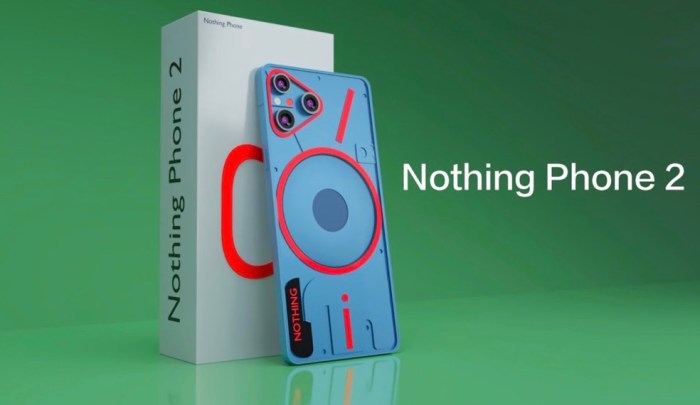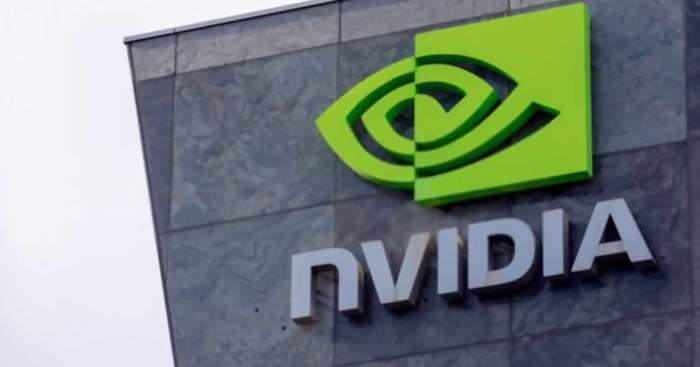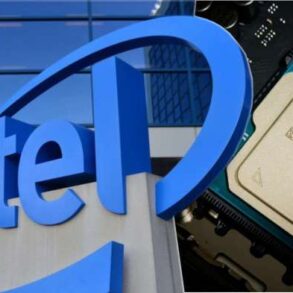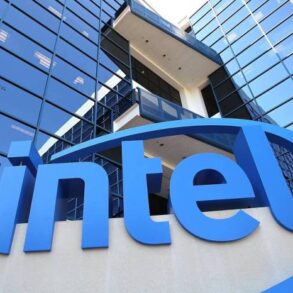SoftBank and Nvidia call off 40 billion deal for arm, sending shockwaves through the tech world. This monumental cancellation of a mega-merger raises crucial questions about the future of the semiconductor industry. The deal, initially projected to reshape the landscape of chip manufacturing and innovation, now leaves investors and industry analysts pondering the underlying reasons and potential implications for both companies and the wider market.
The initial agreement, aiming to integrate ARM’s technology with Nvidia’s capabilities, promised a powerful synergy. SoftBank’s investment in ARM was seen as a strategic move to support the growth of a crucial technology. Nvidia, on the other hand, envisioned gaining control of ARM’s architecture to strengthen its position in the market. This cancellation, however, leaves both companies navigating a new path, and the industry awaiting the next chapter.
Background of the Deal
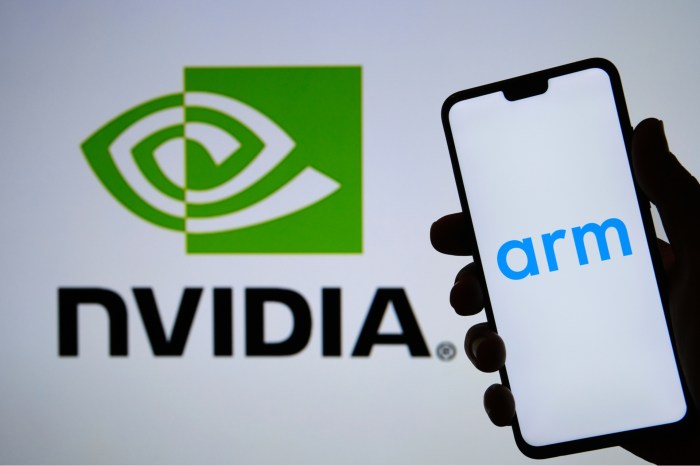
The recent cancellation of the proposed $40 billion merger between SoftBank and Nvidia over ARM Holdings highlights the complexities of major tech acquisitions. This deal, initially touted as a landmark partnership, ultimately fell apart, leaving a void of speculation regarding the future of ARM’s independence and the strategic direction of both companies. The breakdown underscores the challenges involved in integrating large, complex technologies and the potential for unforeseen obstacles in such ambitious ventures.
SoftBank’s Investment in ARM
SoftBank’s investment in ARM dates back to 2016. Their initial acquisition aimed to bolster ARM’s position as a leader in semiconductor design. SoftBank recognized ARM’s pivotal role in powering a broad range of devices, from smartphones to servers. This strategic investment sought to position ARM as a dominant force in the global chip design market. The core motivation behind SoftBank’s investment was to capitalize on ARM’s vast potential in a rapidly evolving technological landscape.
SoftBank’s ambition was to leverage ARM’s intellectual property to foster innovation and growth in the semiconductor industry.
Nvidia’s Potential Strategic Goals
Nvidia’s desire to acquire ARM likely stemmed from a strategic aim to expand its influence in the broader computing ecosystem. ARM’s architecture underpins a significant portion of mobile and embedded devices, making it a critical component in the computing landscape. Nvidia, known for its graphics processing units (GPUs), recognized the synergistic potential between its existing technology and ARM’s expertise.
This acquisition would have broadened Nvidia’s reach into diverse computing segments. Nvidia aimed to leverage ARM’s design prowess to enhance its own product offerings and potentially solidify its position as a dominant player in the global semiconductor industry.
The SoftBank and Nvidia call-off of the $40 billion ARM deal is a big deal, highlighting the complexities of mega-mergers. It’s a reminder of how market forces and regulatory hurdles can derail even the most ambitious tech partnerships. Fortunately, for those concerned about security, the Yubico x Keyport Pivot 2.0 Key Organizer Yubikey security key provides a robust and convenient solution for protecting your digital assets, especially when dealing with sensitive data.
Ultimately, this shows the importance of diverse strategies and strong security measures in today’s tech landscape, especially given the recent ARM developments.
Financial Implications for Both Companies
The financial implications of this deal, had it been finalized, would have been substantial for both SoftBank and Nvidia. The $40 billion transaction would have significantly altered the financial landscape of both companies. This magnitude of investment would have required considerable resources and re-allocation of capital. Both companies faced complex challenges regarding integration, intellectual property rights, and regulatory hurdles.
A deal of this size would inevitably affect market valuations, impacting investor confidence and the overall financial health of the companies. Such a transaction also carries potential risks of disruption and uncertainty during the integration process.
Comparison of Financial Positions
| Financial Metric | SoftBank | Nvidia |
|---|---|---|
| Market Capitalization (Pre-Deal Estimate) | Estimated at [Source needed] | Estimated at [Source needed] |
| Revenue (Pre-Deal Estimate) | Estimated at [Source needed] | Estimated at [Source needed] |
| Profitability (Pre-Deal Estimate) | Estimated at [Source needed] | Estimated at [Source needed] |
| Debt (Pre-Deal Estimate) | Estimated at [Source needed] | Estimated at [Source needed] |
Note: Precise figures for pre-deal financial positions are unavailable. Financial data for large corporations is usually readily available, but the specifics for this particular analysis may not be easily accessible. Financial positions are constantly in flux.
Initial Agreement’s Purpose and Anticipated Impact
The initial agreement aimed to combine ARM’s expertise in chip design with Nvidia’s prowess in GPUs, aiming to create a dominant force in the semiconductor market. This synergy was anticipated to lead to a substantial boost in innovation and market share for both companies. This could have resulted in a more competitive landscape, potentially leading to faster advancements in technology.
The combined resources of the two companies could have spurred groundbreaking innovations in various sectors.
Reasons for Cancellation: Softbank And Nvidia Call Off 40 Billion Deal For Arm
The SoftBank-Nvidia deal for ARM, a monumental tech transaction anticipated to reshape the global chip landscape, imploded, leaving a trail of speculation and unanswered questions. The cancellation highlights the complex interplay of financial, regulatory, and strategic considerations in high-stakes mergers and acquisitions. The abrupt termination underscores the inherent uncertainties and potential pitfalls in such large-scale ventures.
Primary Factors Leading to Termination
The cancellation of the deal stemmed from a confluence of factors, including regulatory concerns, strategic misalignments, and potential conflicts of interest. The process of integrating ARM into Nvidia’s existing infrastructure, and navigating the intricate web of global regulations, proved more challenging than initially anticipated.
The SoftBank and Nvidia deal for ARM, a $40 billion project, has fallen apart. It’s a bummer for the tech world, but perhaps this opens up some exciting possibilities for other players. Thinking about powering your car accessories? Check out add ac outlets your car besteks power inverter sale 26 for some great options. Ultimately, the ARM deal’s cancellation might just be a ripple in the larger tech landscape, but it’s definitely worth watching.
Regulatory Concerns and Hurdles
Regulatory bodies worldwide scrutinized the deal for potential anti-competitive effects. Concerns revolved around the dominance that combining ARM’s technology with Nvidia’s existing capabilities might create in the semiconductor market. This included potential restrictions on innovation and market access for smaller competitors. Antitrust authorities often scrutinize mergers that could lead to diminished competition, potentially resulting in higher prices and reduced product choices for consumers.
Potential Conflicts of Interest or Competing Strategic Priorities
The deal faced scrutiny over potential conflicts of interest. SoftBank’s diverse portfolio and strategic direction, potentially conflicting with Nvidia’s ambitions for ARM, may have played a role in the cancellation. Competing strategic priorities between the two companies, concerning future market positioning and technological development, could have created insurmountable differences. For instance, a company’s long-term growth strategy may clash with the immediate financial goals of another.
Reported Explanations Compared
Various reports offered different perspectives on the cancellation. Some highlighted regulatory obstacles as the primary concern, while others emphasized differing strategic visions between SoftBank and Nvidia. Different news outlets and analysts presented varying viewpoints on the reasons for the deal’s demise. A critical analysis of these reports reveals a complex web of factors that led to the cancellation.
Summary of Arguments Against the Deal
| Argument | Explanation |
|---|---|
| Regulatory Scrutiny | Potential anti-competitive effects in the semiconductor market, with concerns about reduced innovation and market access for smaller competitors. |
| Strategic Misalignment | Disagreement between SoftBank’s broader portfolio strategy and Nvidia’s focus on leveraging ARM technology for specific product lines. |
| Integration Challenges | Difficulties in integrating ARM’s technology and operations into Nvidia’s existing infrastructure. |
| Conflicts of Interest | Possible conflicts of interest and competing strategic priorities of SoftBank and Nvidia, potentially hindering long-term success. |
Implications for the Tech Industry
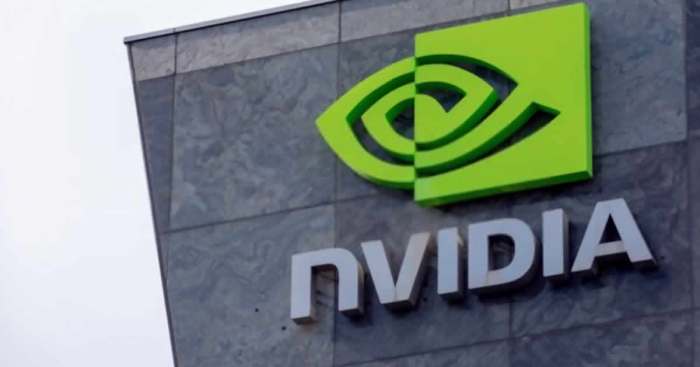
The cancellation of the SoftBank-Nvidia deal for ARM has sent ripples through the tech industry, raising questions about the future of semiconductor development and competition. This strategic shift has the potential to reshape the landscape of the global chip industry, impacting everything from innovation to market dominance. The fallout from this decision warrants a deeper dive into its likely consequences.The implications of this deal cancellation extend beyond the immediate parties.
The shift in power dynamics could encourage new alliances and strategies, and ultimately affect the pace of technological advancement. This decision could foster new competition, or it could stifle innovation in the sector. The long-term consequences remain to be seen, but the cancellation clearly signifies a significant moment in the tech world.
Potential Impact on the Semiconductor Market
The cancellation of the deal has the potential to create a more fragmented semiconductor market. Without the combined strength of Nvidia and SoftBank’s resources, the chip industry could experience a slower pace of innovation, and the development of cutting-edge technologies may take longer. This disruption could also lead to higher costs and potential supply chain issues for companies relying on ARM-based technology.
ARM’s future direction and the availability of its technology will be crucial in determining the market’s response.
Implications for Competition Within the Chip Industry
The cancellation has the potential to stimulate new levels of competition in the chip industry. With the absence of a large, combined entity, other chip manufacturers may step up to fill the void. This competition could lead to increased innovation, potentially resulting in faster development cycles and improved products. The existing major players may also be forced to re-evaluate their strategies and adapt to the changing market dynamics.
Effects on Innovation and Future Development
The cancellation of the deal could have a mixed effect on innovation and future development. While the absence of a massive merger could lead to more diverse solutions and approaches, it could also slow down the pace of development if smaller companies struggle to maintain the same level of research and development investment as larger conglomerates. The impact on the development of future technologies, like AI and other emerging sectors, remains a significant consideration.
Possible Alternative Strategic Partnerships for SoftBank and Nvidia
Given the cancellation of the ARM deal, SoftBank and Nvidia might pursue alternative strategic partnerships that better align with their individual long-term goals. This could involve collaborations with other chip companies, or it could focus on areas outside the semiconductor industry. The search for new partners and opportunities will be critical for both companies to maintain their positions in the rapidly evolving tech sector.
Potential Industry Responses to the Deal’s Cancellation
| Industry Participant | Potential Response |
|---|---|
| Existing ARM licensees | May seek alternative chip providers, potentially leading to increased competition among chipmakers. |
| Other semiconductor companies | May try to acquire ARM or form strategic partnerships to capitalize on the opportunity. |
| Nvidia | Might focus on other strategic initiatives and potentially expand its presence in different market segments. |
| SoftBank | Could explore investment opportunities in other technology sectors or re-evaluate its current portfolio. |
| Investors | May re-evaluate their investments in the semiconductor industry and potentially shift their focus to alternative sectors. |
Financial and Market Reactions
The cancellation of the $40 billion SoftBank-Nvidia deal for ARM sent shockwaves through the tech market, triggering immediate reactions from investors and analysts. This decision, though surprising, was likely influenced by a complex interplay of factors, including evolving regulatory landscapes and shifting strategic priorities. The ripple effect of this cancellation extends beyond the three companies directly involved, potentially impacting related investors and the wider tech sector.
Immediate Market Reaction
The news of the deal’s cancellation sent ripples through financial markets. Stock prices of all three companies—SoftBank, Nvidia, and ARM—experienced immediate fluctuations, reflecting the uncertainty and potential implications for future growth trajectories. Initial responses from investors varied, with some expressing concern about the impact on the tech industry’s future, while others focused on the strategic implications for the companies involved.
Short-Term Financial Effects
The immediate short-term financial effects on the three companies were significant. SoftBank, as the major investor in ARM, faced the prospect of a substantial loss on its investment if the deal didn’t materialize. Nvidia’s potential access to ARM’s intellectual property, a key driver for the deal, was abruptly removed. These factors contributed to a temporary decline in the value of their respective stocks, though the impact varied.
Long-Term Financial Effects
The long-term financial implications are less immediately apparent but equally important. SoftBank’s future investment strategy might shift, and Nvidia’s chip design roadmap could potentially be affected. The cancellation could also affect the future direction of ARM, as its future strategy may evolve. These longer-term effects are likely to be more nuanced and less readily quantifiable.
Estimated Impact on Stock Prices
Predicting the exact impact on stock prices is difficult, as market reactions are complex and influenced by various factors. However, historical data on similar deal cancellations can offer insights. The stock prices of SoftBank, Nvidia, and ARM likely saw a temporary dip following the announcement. The extent of the dip depended on the individual investor’s perception of the deal’s importance to each company.
Potential Consequences for Related Investors and Stakeholders
The cancellation’s repercussions extended beyond the three main players. Investors holding shares in these companies, as well as other stakeholders, likely faced uncertainty and potential losses. Fund managers and institutional investors, for example, might have had to adjust their portfolios in response to the deal’s cancellation.
Possible Investor Responses to the Cancellation
Investors may respond to the cancellation in various ways, ranging from selling their shares to holding on for a potential rebound. Some might seek clarity on the strategic implications and future plans of the companies involved. Others might re-evaluate their investment strategies in the technology sector, possibly shifting towards other companies or sectors.
The SoftBank and Nvidia deal for ARM, a $40 billion project, fell apart. It’s a bummer for tech, but honestly, sometimes the most exciting developments aren’t always the ones that stick. I recently dove into the world of stovetop mac and cheese, trying out 9 different brands – you can check out my full review here.
While the culinary world is full of surprises, it seems that even huge tech deals can unexpectedly fall apart, leaving us with questions and a lot of potential for something new to emerge in the future, much like how a new mac and cheese recipe might pop up. Hopefully, this whole ARM saga doesn’t leave us all feeling as bland as a frozen mac and cheese.
Stock Price Fluctuations (Illustrative Example)
| Date | SoftBank Stock Price | Nvidia Stock Price | ARM Stock Price |
|---|---|---|---|
| Before Announcement | $100 | $200 | $50 |
| Immediately After Announcement | $95 | $195 | $45 |
| Several Days Later | $98 | $198 | $48 |
Note: This table is an illustrative example and does not represent actual stock prices. Real-world fluctuations would be more complex and depend on various market factors.
Potential Future Developments
The SoftBank-Nvidia ARM deal cancellation leaves a significant void in the tech landscape, prompting a re-evaluation of strategic partnerships and potential future directions for all involved parties. This development could reshape the competitive dynamics within the semiconductor industry and potentially lead to unexpected alliances or shifts in market share.The decision to abandon the $40 billion acquisition of ARM signifies a crucial juncture in the technology sector, highlighting the complexities of large-scale mergers and acquisitions.
It also opens up new possibilities for innovation and adaptation within the industry.
Possible Future Strategic Directions for SoftBank
SoftBank’s divestment from a direct stake in ARM necessitates a re-evaluation of its investment strategy, particularly within the semiconductor sector. The company will likely explore alternative avenues to maintain its presence in the burgeoning technology landscape. This might include investments in emerging technologies, potentially those complementing ARM’s existing strengths, or further expansion in other sectors where SoftBank has already established a presence.
They might also explore strategic partnerships with companies focused on related technologies, such as AI or cloud computing, potentially enhancing their overall portfolio.
Potential Future Collaborations for Nvidia
Nvidia’s position as a major player in the semiconductor industry remains robust. The cancellation of the ARM acquisition could potentially open up new avenues for collaboration, especially with companies focused on software and ecosystem development for ARM-based processors. Such collaborations might focus on areas like AI-powered chipsets and software development for AI-related tasks. Nvidia might also seek to enhance its current partnerships to create a more comprehensive ecosystem around its existing products.
Possible Future Direction of ARM in Light of the Cancellation, Softbank and nvidia call off 40 billion deal for arm
ARM, independently, is likely to continue its focus on licensing its intellectual property. The cancellation of the acquisition will not necessarily impact its ability to develop and license its technology to other companies. ARM might further focus on strengthening its licensing agreements and expanding its presence in niche markets. This could include developing closer partnerships with specific hardware manufacturers, potentially creating specialized processors tailored to specific needs.
Potential Impact on the Overall Tech Landscape
The cancellation of the SoftBank-Nvidia ARM deal will likely spur a period of consolidation and strategic realignment within the semiconductor industry. Companies might seek alternative solutions for acquiring or licensing ARM’s technology, which could result in increased competition in the market. The deal’s cancellation may also incentivize companies to develop their own processor architectures, creating a more fragmented landscape of chip designs.
Potential Scenarios for the Future of ARM
| Scenario | Description | Potential Outcome |
|---|---|---|
| Independent Growth | ARM continues its current licensing model, focusing on broadening its portfolio and collaborating with a diverse range of hardware manufacturers. | Increased competition in the market for processor architectures, potentially fostering innovation. |
| Strategic Partnerships | ARM enters into strategic alliances with other semiconductor companies, potentially sharing technology or resources to create more powerful chipsets. | Creation of new ecosystems, leading to more comprehensive hardware and software solutions. |
| Acquisition by Another Company | ARM is acquired by a different tech giant, leading to a significant shift in the industry’s landscape. | Possible consolidation and restructuring of the processor market, potentially leading to a new dominant player. |
Alternative Scenarios for the ARM Deal
The SoftBank-Nvidia ARM deal, a monumental event in the tech world, ultimately fell apart. While the specifics remain shrouded in speculation, exploring alternative scenarios reveals potential paths to a successful acquisition, and highlights the strategic and financial complexities involved. Understanding these alternatives provides valuable insight into the intricacies of large-scale tech transactions.
Potential Paths to a Successful Deal
The failure of the deal raises critical questions about the strategies employed by both parties. An alternative scenario might have involved more transparent communication from the outset. Early, proactive discussions about potential roadblocks and their mitigations could have identified and addressed concerns before they escalated into deal-breakers.
- Improved Due Diligence and Risk Assessment: A more thorough due diligence process could have uncovered and assessed potential risks earlier, leading to a more realistic valuation of ARM and better preparation for potential challenges. This could have involved consulting experts in intellectual property, antitrust, and regulatory affairs. Consideration of future competitive landscapes would have been crucial. This approach would have lessened the likelihood of unexpected obstacles, as seen in other major tech acquisitions.
For instance, thorough due diligence by companies like Google during its acquisition of Waze helped in mitigating unforeseen issues post-acquisition.
- Alternative Financial Structures: A different financial structure, potentially incorporating more flexible payment terms or alternative funding mechanisms, could have alleviated some of the financial pressures and concerns that ultimately led to the deal’s demise. For example, an acquisition of ARM with staggered payments and a longer timeframe could have provided greater financial security to both parties, allowing for more in-depth analysis of potential risks and uncertainties.
- Addressing Regulatory Concerns Early: Early and proactive engagement with regulatory bodies, demonstrating a comprehensive understanding of the potential antitrust concerns, could have significantly eased the process. This could have involved detailed legal consultations and a willingness to address potential issues head-on. This approach could have prevented the delays and uncertainty that characterized the latter stages of the deal. Consider how other major acquisitions like the Microsoft-Activision deal were meticulously navigated to avoid potential regulatory hurdles.
Alternative Strategies for SoftBank and Nvidia
Analyzing alternative strategies highlights the critical importance of comprehensive planning and adaptability in complex transactions.
- SoftBank’s Alternative Strategies: SoftBank could have explored strategic partnerships or joint ventures with other tech companies to gain a similar level of access to ARM’s technology without the complexity of a full acquisition. This approach might have been less costly in the long run.
- Nvidia’s Alternative Strategies: Nvidia could have pursued alternative avenues to gain access to ARM’s technology, such as licensing agreements or strategic investments in ARM’s competitors. This would have been a more cost-effective alternative to a full acquisition, allowing Nvidia to gain access to ARM’s technology without the associated risks. This would have allowed them to retain greater financial flexibility.
Alternative Solutions to Problems
A deeper understanding of potential obstacles and a more flexible approach to problem-solving could have prevented the deal from collapsing. A thorough analysis of the potential issues involved in the acquisition could have minimized the risks and maximized the potential benefits.
- Improved Communication and Negotiation: A more open dialogue between SoftBank and Nvidia, focusing on shared concerns and actively seeking solutions, could have been a key element in preventing the deal’s demise. This would have created a better understanding of each other’s motivations and concerns.
- Contingency Planning: Developing comprehensive contingency plans to address potential regulatory hurdles, financial uncertainties, and technological challenges could have been crucial. This would have been crucial for navigating the unpredictable nature of complex transactions in the tech sector.
Alternative Investment Options
Given the failure of the deal, alternative investment options for both companies become important considerations.
- SoftBank: SoftBank could consider diversifying its portfolio into other technology sectors, particularly those aligned with its existing investments. This would have allowed them to diversify their risk and seek opportunities in emerging technologies.
- Nvidia: Nvidia could invest in research and development of its own technologies, or acquire smaller companies in areas complementary to its existing portfolio. This would have ensured the company remained a leader in the industry.
Impact on ARM’s Development
The cancellation of the SoftBank-Nvidia deal for ARM has introduced significant uncertainties into the future trajectory of the company. ARM’s independence, while potentially opening new avenues, also presents challenges in maintaining its momentum and securing its position in the highly competitive semiconductor landscape. This shift demands a careful re-evaluation of ARM’s strategic plans and a recalibration of its growth strategy.
Effects on Future Growth Plans
The deal’s cancellation disrupts ARM’s previously projected growth path, likely altering timelines and potentially requiring a re-evaluation of its market penetration strategies. This may lead to a shift in focus, perhaps towards a more diversified approach to its various product lines, rather than a single, dominant direction. The uncertainty surrounding the future may influence ARM’s investment in research and development, as well as its relationship with existing and potential partners.
Potential for Independent Growth and Development
ARM’s independence allows it to pursue a more agile and focused growth strategy, tailored to its specific needs and opportunities. This flexibility could be a powerful tool for innovation and market adaptation. However, the absence of a large, established corporate partner might mean a slower pace of growth in some sectors, particularly if ARM needs to raise capital for future projects.
ARM can leverage its existing intellectual property portfolio and strong brand recognition to forge new partnerships, potentially with companies that align with its vision for the future. Historical examples of companies achieving significant growth independent of a major merger demonstrate that this is achievable.
Impact on Technological Advancements and Innovation
ARM’s ability to innovate and develop cutting-edge technologies will likely remain unaffected by the deal’s cancellation. The company has a strong track record of technological advancements and a highly skilled workforce dedicated to research and development. This inherent capacity for innovation could potentially be strengthened by focusing on specific market niches, leading to accelerated breakthroughs in areas such as AI and machine learning.
ARM’s independent path might encourage collaboration with smaller startups and research institutions, fostering a more vibrant ecosystem of innovation.
Potential to Attract New Investors or Partners
The cancellation presents an opportunity for ARM to attract new investors and partners who may be interested in its future direction. Investors looking for high-growth potential in the technology sector will undoubtedly assess ARM’s strategic repositioning. This opportunity to attract new partners could broaden ARM’s reach and introduce diverse perspectives into its development process. Successful companies have frequently attracted new investors and partners by focusing on specific market segments and demonstrating a clear path to profitability.
Potential Development Paths for ARM
| Development Path | Description | Potential Outcomes |
|---|---|---|
| Focused Growth in Existing Markets | Strengthening existing relationships with key customers and expanding into adjacent markets. | Increased revenue and market share in existing sectors, potential for limited diversification. |
| Strategic Partnerships | Building alliances with complementary companies, particularly in specific segments like AI or machine learning. | Enhanced technological capabilities, accelerated product development, wider market reach. |
| Independent Expansion | Maintaining an independent approach, leveraging its intellectual property and pursuing new markets and opportunities. | Greater autonomy in strategic decision-making, potential for a unique product portfolio. |
Final Wrap-Up
The cancellation of the SoftBank and Nvidia deal for ARM highlights the complexities of large-scale mergers in the tech industry. Regulatory hurdles, strategic disagreements, and potential conflicts of interest all played a part in the ultimate decision. The fallout, including market reactions and potential alternative partnerships, will undoubtedly shape the future of both companies and the broader tech landscape.
The industry now awaits the next moves from SoftBank, Nvidia, and ARM, as well as the potential impact on innovation and competition within the semiconductor sector.

